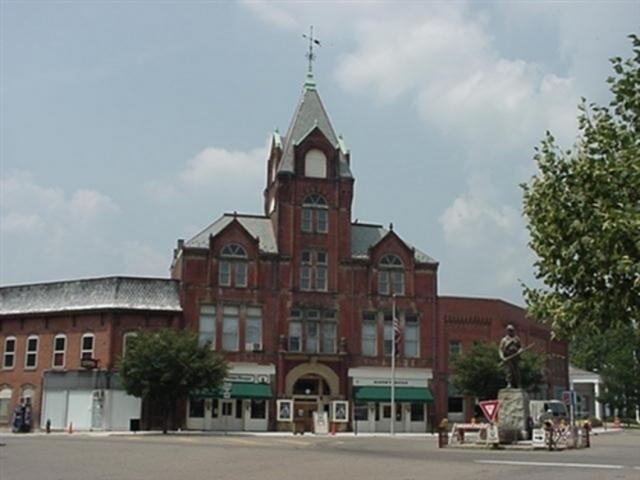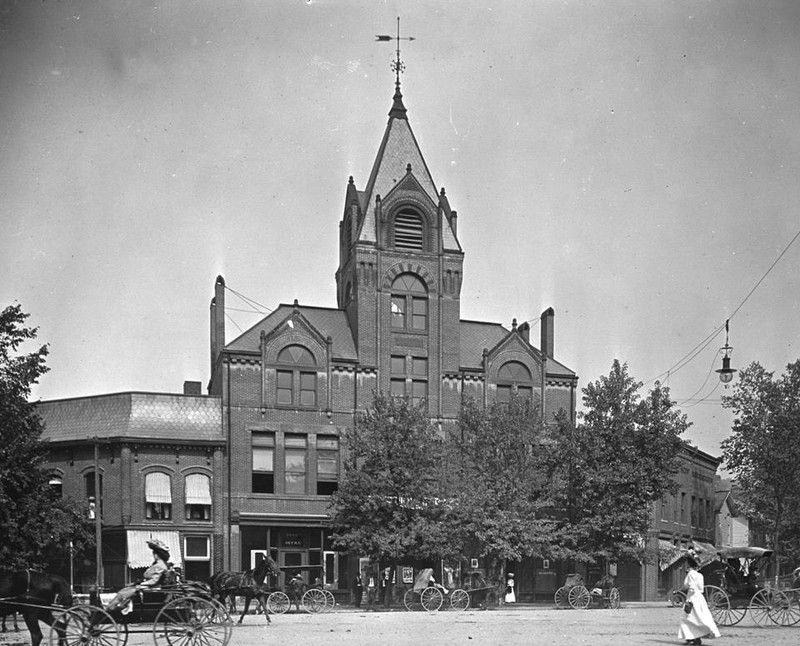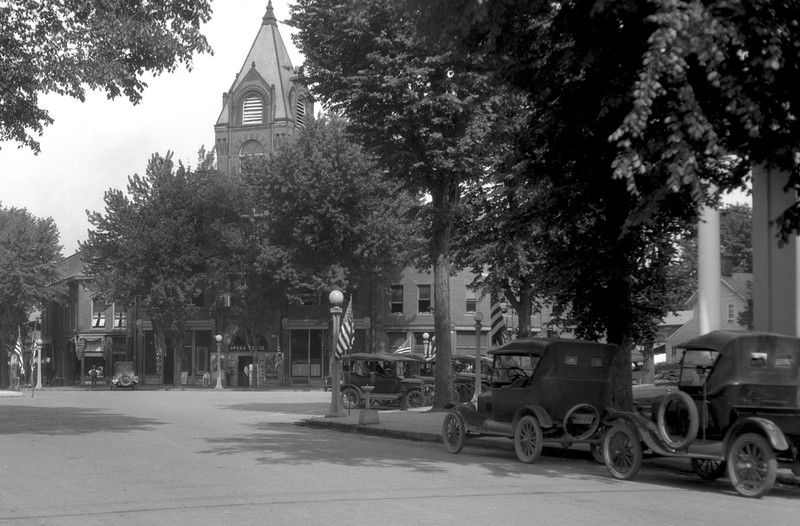Twin City Opera House
Introduction
Text-to-speech Audio
Images
The Twin City Opera House today.

Inside the Twin City Opera House.

The opera house ca. the 1910s.

A side-street view of the opera house, ca. the 1920s.

Backstory and Context
Text-to-speech Audio
When the Twin City Opera House and McConnelsville Town Hall were constructed, McConnelsville and surrounding towns were booming. Railroads and riverboats brought plenty of people, goods, and opportunities to the area. McConnelsville, the county seat, housed a number of businesses but few relating to entertainment and leisure. In 1889, the town council bought two lots in the “burned district” in the heart of McConnelsville (so-called because of a destructive fire that raged through the area in 1879) for $4,000. The plan was to build an official town hall and an opera house.
Ground was broken on October 20, 1889, with H. C. Lindsay, an architect from Zanesville, laying out the plans. The finished building was to be three stories tall and to cost $16,000. The theater would be on the first floor, the town government on the second, and a ballroom on the third. The auditorium featured a three-degree downward slope for visibility and a dome for acoustics. Outside, the building was topped with a tower 108 feet above the sidewalks. A clock was also planned, but the project ran over budget, and it was abandoned.
On May 28, 1892, the Twin City Opera House officially opened to the public. For the grand opening, the Arion Opera Company performed The Mikado. All available seats were sold out. Trains took extra trips to McConnelsville to bring in the curious onlookers, many of whom were more interested in the theater’s electric lights rather than the show itself. But, the local generating plant failed during the evening’s performance, leading to a frenzied search for oil lamps. Many patrons left, though those who stayed reported a spectacular performance. To prevent such an event from happening again, the opera house was then fitted with gas lighting too.
The Twin City Opera House installed a permanent projection booth for movies in 1913. The best seats to a movie could cost as much as twenty cents while most others were only a nickel. The theater began using Vitaphone technology in 1930 to show “talking pictures.” In 1936, it closed for the only time in its history to install a more updated form of sound technology. The old projection booth was removed and replaced, and the auditorium itself was renovated.
Movies remained the king of entertainment at the opera house throughout the 1940s, 50s, and 60s. The stage began to crumble because of its age, lack of a use, and the effects from a 1909 fire. Galen Finley, who took over the opera house in 1962 after working there for years, made the stage usable again. In the 1970s, a long-list of fire code violations nearly shut the theater down. Thousands of dollars were put into new wiring, curtains, and fire extinguishers to keep the place up-and-running. Finley sold the theater in the early 1990s to its current owner, the nonprofit Opera House Inc.
Sources
On the square in McConnelsville, Ohio The Twin City Opera House. Ohio.org. Accessed July 13, 2018. http://www.ohio.org/destination/mcconnelsville/theatres/the-twin-city-opera-house. Photo source.
Morris, Matthew. Twin City Opera House celebrates 125 years. Zanesville Times Recorder. April 12, 2017. Accessed July 13, 2018. https://www.zanesvilletimesrecorder.com/story/entertainment/2017/04/12/twin-city-opera-house-celebrates-125-years/99880198/.
Photos. Twin City Opera House. Accessed July 13, 2018. http://www.twincityoperahouse.com/photos.php. Photo source.
